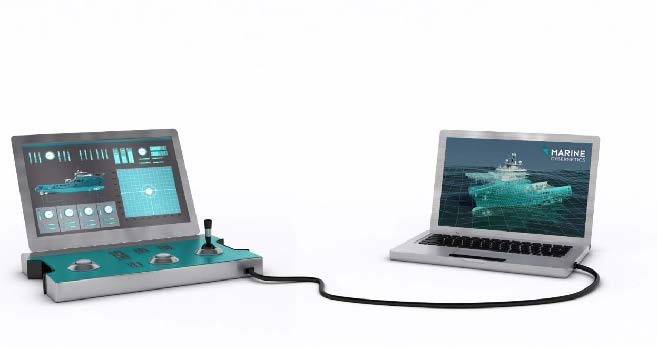As modern vessels become more specialised and with more digital, and interconnected systems, the question has to be will this inter-operability work well in a marine environment. Samantha Fisk spoke to the class society DNV GL who is trying to find out.
A vessel being built these days has different physical assets (mechanical systems) getting installed onboard than one that was built just a decade ago, or even five years ago. But increasingly all these systems are being asked to communicate with each other: the end goal is a fully connected ship.
We are still in the early days of this and although there are many solutions coming on to the market to modernise systems to bring them up to standard, making sure that these systems work as intended is still one of today’s challenges in the market.
Luca Pivano is principle specialist of DP simulations at DNV GL. He is pushing for more pre-construction tests of these complex systems ahead of the vessel being built. He says that in order to make sure that systems run effectively and safely, simulations can be done of the systems before they are installed. He notes that tests can be run at sea trials, but this can be a costly option for the shipowner, if glitches in the system are then found.
“As from today we do not have mandatory rules or regulations. There are some class notation monitoring for this. It will come more in the future and there will be more mandatory requirements”, he says.
For now these systems are required to work in the environment that they are put in, along with other systems that may not necessarily be manufactured by the same OEM. The industry is taking steps to help streamline the systems that are being installed onboard by the introduction of platforms that help to integrate different software solutions through one portal.
“With autopilot if GPS goes away [fails] you wonder about errors with your direction and thrusters,” Pivano says as an example. “It’s about making a system that is fault tolerant and there is a lot of software involved.”
Going a step further , in the case of systems for autonomous vessels, he questions how to test such systems that will adapt and learn with traditional methods? This has been the basis on which DNV GL has developed it simulation test for these systems.
“Our target is to test how the system responds to failures and responds to abnormal and normal conditions”, explains Pivano.
To do this all the data about a given system is gathered, which is then analysed and from that a simulation programme is then built. You can then test different modes of operation and run automated system, DNVGL simulator can also be added to the system simulator to run further verification tests of the system.
Pivano notes that from these tests this is when the faults are located and can be brought up to owners and then corrected in time. DNVGL discovers roughly 50 issues per project, some of which would be hard to pick up in real life circumstances.
“It is very hard to detect these types of failures without a simulator because firstly it is a destructive test and no one wants to run a test that will destroy your unit; secondly it is difficult to trigger events in real life”, explains Pivano. He also notes that it is about making users aware of the failures to that system.
Pivano highlights that by simulating the possible failures in advance of a system being installed onboard a ship, it can in the long term save shipowners both cost and time further down the road. Also, by testing a system using simulation-based techniques allows systems to really be analysed and many different scenarios looked in to.
And if you want to know more about LUca Pivano’s work in marine cybernetics, DNV GL has made a little film about him































